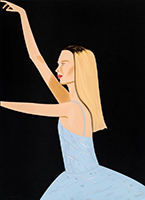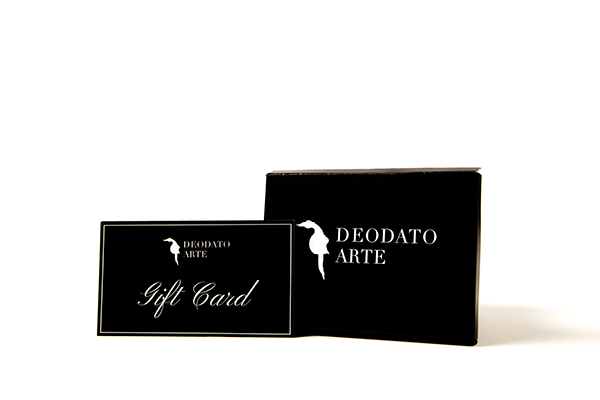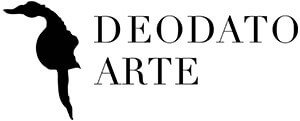
Yayoi Kusama, the famous artist behind works such as Narcissus Garden, will be turning 95 on March 22nd. In celebration of her birthday, let’s revisit the life and career of one of the world’s most successful living artists.
Yayoi Kusama: Early Life (1929-1956)
Yayoi Kusama was born on March 22, 1929, in Matsumoto, Nagano, where she was raised in a family of merchants owning a plant nursery and seed farm. From a young age, Kusama showed interest in art; however, her mother was opposed to her artistic pursuits, often taking away her artwork. Kusama's relationship with her parents was challenging. Her mother was abusive, and her father was unfaithful, leading to Kusama developing a disdain for sexuality.
At ten, Kusama began experiencing vivid hallucinations, seeing auras and fields of dots, which would become integral to her art. She found solace in the smooth white stones by her family home's river, which partially contributed to her fixation with dots. At thirteen, during World War II, Kusama worked in a military factory, sewing parachutes. This period, marked by air-raid alerts and the sight of American B-29s, greatly influenced her childhood and later values. She later attended Arigasaki High School and studied Nihonga painting, though she grew frustrated with this traditional style and instead became interested in the avant-garde, eventually staging solo exhibitions in this style in Japan.
Life in the United States (1957-1972)
Kusama moved to the United States in 1957, settling in Seattle for a year before moving to New York City as a result of correspondence with Georgia O'Keeffe. In New York, she quickly established herself as a prominent figure in the avant-garde movement, earning recognition from art critics. Her studio became a hub of creativity, located in the same building as notable artists Donald Judd and Eva Hesse. Kusama also became known for her public appearances in bob wigs and colorful fashion. Her participation in the 1966 Venice Biennale with “Narcissus Garden”, an installation of 1500 mirrored spheres, marked a high point in her career. The installation doubled as a critique of the art market's commodification, shown by Kusama selling individual spheres from the exhibition for ~$2 each immediately after being installed.
Yayoi Kusama’s Return to Japan (1973-Present)
Soon after the death of her close friend Joseph Cornell, Kusama returned to Japan in 1973, where her work initially received a cold reception. Despite struggling with ill health and facing criticism from the Japanese art world, she continued her creative endeavors. Kusama eventually became too depressed to work and eventually attempted suicide, leading her to voluntarily reside in a mental hospital from 1977 onwards. Located near her studio in Tokyo, Kusama remained artistically active, exploring various mediums and beginning a literary career. She still resides at the same hospital today, having said
“If it were not for art, I would have killed myself a long time ago”.
Inspirations for Yayoi Kusama’s Style
Kusama's distinct style was shaped by a fusion of her early encounters with American Abstract Impressionism and deeply personal experiences. From her elementary school days, Kusama began drawing pumpkins and depicting her hallucinations in her artwork, setting the tone for her future works. Her interest in pumpkins specifically came from walking through plantations with her grandfather, inspiring her to focus her first watercolors on pumpkins. Even today, her polka dot-laden pumpkins are available for reasonable prices in both ceramic and soft sculpture styles. If you are interested in getting one for your home, our website has different colors, shapes, and sizes available for purchase.
At the age of ten, she started experiencing vivid hallucinations, such as flashes of light, auras, and fields of dots. These consisted of flowers and multiplying patterns on fabrics, leading to a creative process she termed "self-obliteration." As such, the polka dots and repetitive patterns in Kusama's art were not just stylistic choices but also a therapeutic response to her intrusive thoughts and hallucinations. By the 1950s, Kusama was creating abstract natural forms in various mediums, gradually incorporating her signature polka dots into her art. These dots, or "infinity nets," were a direct manifestation of her hallucinations, first appearing in her works as early as 1939.
Yayoi Kusama Auction Prices
Prices for Yayoi Kusama's artworks have surpassed millions of dollars in the auction world, particularly her paintings from the late 1950s and early 1960s. A significant milestone was reached in November 2008 when Christie's New York auctioned a 1959 white Infinity Net painting, previously owned by Donald Judd, titled "No. 2." It fetched $5.1 million, setting a record for a living female artist at the time. In comparison, her sculptures from her New York period have also drawn notable sums. For instance, "Golden Macaroni Jacket," an assemblage from 1965 comprising wool, pasta, paint, and a hanger, garnered ~$147,687 at Sotheby's London in October 2007.
Additionally, a 2006 acrylic on fiberglass-reinforced plastic pumpkin achieved $264,000 at Sotheby's in the same year. Another remarkable sale occurred in May 2013 at Art Basel/Hong Kong, where her "Flame of Life – Dedicated to Tu-Fu (Du-Fu)" was sold for $960,000, the highest price paid at that show. Kusama further separated herself as the world’s highest-selling female artist when her "White No. 28" from the Infinity Nets series was purchased for $7.1 million at a Christie's auction in 2014. If you are interested in an auction-worthy Kusama work without paying record-setting prices, Deodato Arte Gallery has a 1983 screenprint limited to only 100 copies available.
Discover the Artwork by Yayoi Kusama!
Yayoi Kusama’s Fashion Collaborations: Lancôme, Louis Vuitton, etc.
Kusama's influence lies not only in the art market; her designs have been well-received in the fashion world, marked by unique collaborations where she blends her artistic vision with commercial fashion and cosmetics. In 1968, she founded the Kusama Fashion Company Ltd, venturing into the world of avant-garde fashion with her own "Kusama Corner" at Bloomingdales. In 2011, Kusama had expanded her artistic reach into the cosmetics industry, designing artwork for a series of six exclusive lip glosses by Lancôme. In the same year, after a studio visit from Marc Jacobs in 2006, Kusama collaborated with Louis Vuitton, creating a unique line that spanned leather goods, clothing, accessories, shoes, watches, and jewelry. This collection debuted in 2012 in a specially designed SoHo pop-up shop, featuring Kusama's iconic tentacle-like forms and polka dots. This initiative later expanded to six additional pop-up shops globally. In 2023, a second series of Louis Vuitton products featuring her designs was released. Additionally, in 2011, Kusama was commissioned to design a cover for the London Underground's pocket maps. This design, titled "Polka Dots Festival in London (2011)," showcased her signature style.
Current Yayoi Kusama Exhibitions & Collections
Today, Kusama’s works are housed in various museum collections across the world, including prestigious names such as the MoMA, LACMA, Tate, Centre Pompidou, and others. In 2017, a 50-year retrospective of her works was put on display at the Hirshhorn Museum; that same year, her namesake museum, the Yayoi Kusama Museum, was unveiled in Tokyo. Kusama’s Infinity Rooms, mirror installations meant to make the viewer feel like they are in a never-ending space, also have permanent installations in museums across the world. These can be found in the following cities: Los Angeles, CA; Phoenix, AZ; Pittsburgh, PA; Boston, MA; Raleigh, NC; Nancy, France; Rotterdam, Netherlands; Humlebæk, Denmark; Oslo, Norway; Jeju Island, Korea; Canberra, Australia; Jakarta, Indonesia; Toronto, Ontario.
If you are interested in viewing a Kusama exhibition in person, including her Infinity Rooms, there are four museums with active exhibits:
- Perez Art Museum, Miami - "Yayoi Kusama: Love is Calling" (March 9, 2023 - April 7, 2024): Featuring Kusama's 2013 work "Love is Calling,"this exhibition is an immersive experience with polka-dotted soft sculpture tentacles and changing colors. It encapsulates Kusama's themes of life, death, and universal love.
- Tate Modern, London - "Yayoi Kusama: Infinity Mirror Rooms" (May 18, 2021 - April 28, 2024): This exhibition showcases two of Kusama's large infinity mirror installations, "Infinity Mirrored Room - Filled with the Brilliance of Life" and "Chandelier of Grief," along with a display of photographs and moving images. Held in The George Economou Gallery, it's available for general admission with tickets priced at £10, and there are exclusive nighttime events.
- Memorial Art Gallery, Rochester University, New York - "Infinity Mirrored Room - Let’s Survive Forever" (September 14, 2023 - May 5, 2024): This installation presents a field of silver orbs using mirrored spheres, offering an immersive experience. Tickets for timed entry are available in person on the day of your visit.
- San Francisco Museum of Modern Art - "Yayoi Kusama: Infinite Love" (October 14, 2023 - September 7, 2024): This major exhibition includes Kusama’s kaleidoscopic infinity rooms, focusing on themes of infinity and love, and features her new work “Dreaming of Earth’s Sphericity, I Would Offer My Love” (2023).
As one of the world’s greatest living artists, Yayoi Kusama’s birthday is without a doubt newsworthy, especially considering that she is nearing 100 years old. Her unique style has captivated millions across the globe and will forever remain impactful in the art world. Deodato Arte wishes a very happy 95th birthday to the Priestess of Polka Dots!











 Register
Register Wishlist
Wishlist Contact Us
Contact Us






